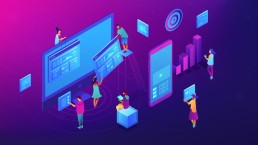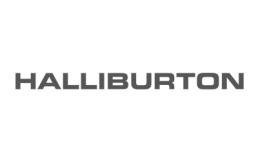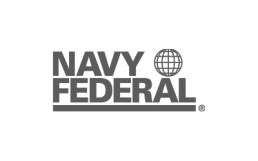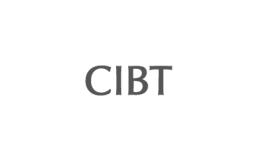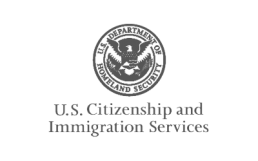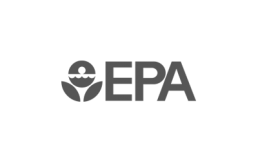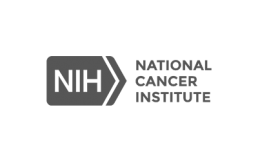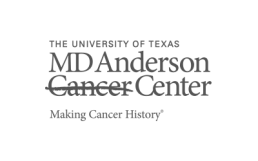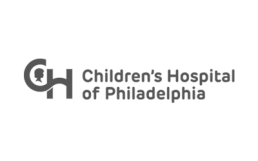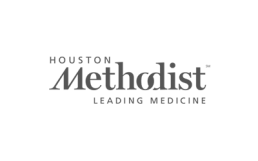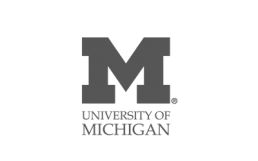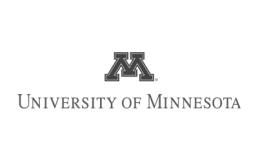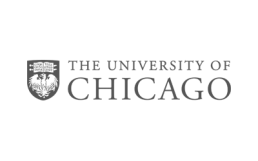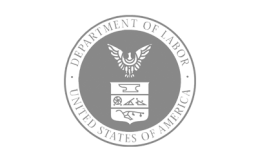The Future of Education - Integrated Data and Infrastructure
We work with universities to enhance the power of integrated systems in student experiences. We improve operational demands and adapt to new models of teaching. The university system in the United States is governed by individual states and offer various undergraduate and graduate programs. Universities emphasize research, liberal arts, and vocational training, catering to over 20 million in the US. Public universities are primarily state-funded, while private universities rely on tuition and donations. Accreditation ensures quality education and institutional accountability. The system is characterized by a strong emphasis on academic freedom and diversity, fostering an environment for critical thinking and innovation. Additionally, universities often engage in community service and partnerships, enhancing their role in local and global contexts.

Many educational institutions are burdened with legacy systems that fail to keep pace with evolving digital demands.
Challenges
A lack of integration between various platforms, including learning management systems (LMS) creates an incoherent learning environment.
Obsolete Technology
Many educational institutions are burdened with legacy systems that fail to keep pace with evolving digital demands. Outdated technology not only limits the efficiency of administrative operations but also stifles the introduction of innovative learning tools, leading to a suboptimal educational experience.
Inadequate System Integration
A lack of integration between various platforms, including learning management systems (LMS), student information systems (SIS), and administrative tools, creates fragmented operations. This fragmentation disrupts data flow and results in inconsistent user experiences, making it challenging for educators and students to navigate seamlessly across different systems.

Reduced Learner Involvement
The success of educational technology heavily depends on the active participation of its users. When students and educators are disengaged, either due to a lack of user-friendly design or insufficient training, the technology’s potential to enhance learning outcomes is significantly diminished.
Resource Constraints
Many educational institutions struggle with financial limitations, making it difficult to invest in new technologies or maintain current systems. As a result, important upgrades and technological advancements are often delayed, further compounding issues related to outdated systems and scalability.
Growth is often met with resistance in the form of hurdles from cultural to financial, and organizational barriers.
Organizational Barriers
Resistance to change, along with a lack of strategic alignment between IT goals and institutional strategies, can significantly slow progress and lead to ineffective implementation of new technologies. Additionally, fragmented processes within institutions create inconsistencies that impede the smooth adoption of these IT solutions.
Financial Barriers
Budget constraints and high implementation costs limit the ability to invest in necessary IT upgrades, making it difficult for institutions to enhance their technological capabilities. Additionally, ongoing maintenance expenses further increase financial pressure, hindering sustainable investments in IT infrastructure.
Technological Barriers
Legacy systems often struggle with compatibility issues when integrating newer technologies, leading to significant integration challenges. Furthermore, ensuring the security of sensitive data remains a critical concern, complicating the overall effectiveness of IT systems.
Operational Barriers
Operational inefficiencies disrupt the smooth functioning of IT systems, often exacerbated by inadequate training for staff and students, which hinders effective technology use. Additionally, the lack of sufficient technical support further complicates these operational challenges, limiting the overall effectiveness of technology implementation.
Cultural Barriers
Resistance to new technologies, driven by fear of change and reluctance to adopt new tools, slows down technological integration, while poor collaboration among stakeholders further impedes the successful implementation of IT solutions. Additionally, conflicting priorities among faculty, students, and IT teams contribute to a slower adoption process.
Desired Outcomes
Modernized IT infrastructure helps meet specific institutional needs with custom software and tailored applications, to ensure enhanced accessibility.
Immersive Digital Journeys
Deliver engaging and personalized learning by integrating interactive tools, AR/VR, gamification, and AI-driven adaptive learning with digital collaboration platforms, resulting in deeper student engagement and improved educational outcomes.
Efficient Resource Utilization
Maximize staff focus on strategic roles and improve resource management by automating routine tasks with RPA, integrating ERP and SIS systems, and utilizing cloud-based solutions and real-time analytics for instant data access and decision-making, leading to enhanced productivity and operational effectiveness.
Effective Learning Solutions
Support evolving digital needs and innovative teaching methods with modernized IT infrastructure, scalable cloud services, and virtualization, ensuring enhanced accessibility and adaptability across diverse learning environments, ultimately fostering a more inclusive and effective educational experience.
Analytical Performance Insights
Drive financial efficiency and maximize returns by leveraging cost-effective cloud services, open-source technology, and analytics tools for optimized budgeting and ROI measurement, leading to informed decision-making and enhanced financial performance.
Intuitive Interfaces
Enhance user experience and meet specific institutional needs with custom software and tailored applications, seamlessly integrated for optimal functionality and designed with intuitive UX/UI for accessibility, resulting in increased user satisfaction and efficiency.
Robust Cybersecurity Measures
Secure comprehensive protection and data integrity by implementing encryption, intrusion detection, and regular security audits to safeguard sensitive information and ensure compliance with standards, ultimately fostering trust and resilience against cyber threats.
Success Stories
We help our customers success with real-life ventures.
10/10/2022Case StudiesCustomer Experience,Service Design,Commercial,Education,Information Communication Technology (ICT)
Agile Development to Incentivize Health Management
See how we helped a large university develop an application to promote medication adherence and disease self-management through social and game-mechanics.
02/05/2021Case StudiesDigital Transformation,Design Thinking,Information Communication Technology (ICT),Innovation in IT
Radiant Gains Recognition as Verizon is Named to IDG’s 2020 CIO 100
Radiant is proud to announce that it was an integral part of the team that helped Verizon be named to IDG’s 2020 CIO 100 list of innovative organizations that exemplify the highest levels of operational and strategic excellence in IT. This prestigious honor celebrates companies and award-winning IT projects which deliver business value, optimize business processes, enable growth, and create competitive advantages.
01/23/2021Case StudiesFinancial,Business Intelligence,Commercial,Data Engineering and Platforms
Reporting Solution for Fortune 500 Clients
Radiant delivered numerous reporting solutions across the globe, including Fortune 500 clients. One of our clients in financial services must audit the various clients’ financial statements, analyze the reports, and assess the risk. The process involves numerous manual steps, aggregating the data from multiple disjointed and discrete systems in various formats, including spreadsheets and flat files.
01/22/2021Case StudiesFinancial,Robotic Process Automation,Business Intelligence,Commercial
Robotic Process Automation for a Large Financial Services Client
Radiant helped one of its financial services clients with process automation using industry-leading RPA tools.
01/22/2021Case StudiesDigital Communication,AI Adoption,Commercial,Telecom/Information Communication Technology (ICT)
Digital Network Assistant Chatbot for a Large Telecom Client
A large telecom client's primary objective of this project is to help 10,000+ Network and Technology specialists across the globe ranging from circuit engineers to field operators who manage extremely complex provisioning, troubleshooting, and maintenance workflows under significant time pressure with a Digital Network Assistant.
05/19/2020Case StudiesChange Management,Organizational Transformation,Knowledge Management,Commercial,Oil & Gas
Radiant Helps a Supermajor Increase the Quality of Learning Outcomes While Decreasing the Costs
An oil and gas supermajor engaged Radiant to provide ongoing support for analysis, instructional design, and development for global learning initiatives.
05/19/2020Case StudiesProduct Development and Integration,System Modernization,Commercial,Telecom/Information Communication Technology (ICT)
Software Development and Maintenance for a Large Telecom Client
A large telecom client has a huge challenge managing data and provisioning services with a high level of quality and reliability. As a result, their IT needs a variety of applications and systems to manage the company's customers and its rapidly changing needs for rapid and reliable provisioning.
05/19/2020Case StudiesHealth,Digital Strategy & Experience,Service Design,Education
Quit4Health
Quitting smoking is notoriously difficult; it takes the average smoker at least fourteen attempts to quit successfully. This project aims to translate and update an evidence-based interactive smoking cessation website to mobile platforms.
05/18/2020Case StudiesService Design,Robotic Process Automation,Commercial,Information Communication Technology (ICT)
User Experience Can Quickly Drive Digital Transformation
Radiant accelerated Verizon’s Enterprise Transformation with an evidence-based User Experience (UX) project that simplified the user experience for over 10,000 workers in the Network Systems Engineering group.
05/18/2020Case StudiesChange Management,Federal,System Modernization,Information Communication Technology (ICT)
Quality Assurance and Testing Services
USCIS, through the Office of Transformation Coordination (OTC), is in the midst of global, web-based technologies and IT support that gives direct, secure access to USCIS services by applications and petitioners.
I am text block. Click edit button to change this text. Lorem ipsum dolor sit amet, consectetur adipiscing elit. Ut elit tellus, luctus nec ullamcorper mattis, pulvinar dapibus leo.
Enablers
Our enablers fuel your customer loyalty and product growth.

Digital Strategy and Experience
Discover improved customer experience, productivity, and ROI.

Cloud Transformation
Scalable, secure, and agile cloud infrastructure is taking the industry by storm.

Analytics, Data Science and AI
Envisage a steady stream of insights through transparent, accessible data.
Insights
Read about our thought leadership, the latest technological trends, and tips.
World Class Customers
We have a variety of global partners we work with to help them achieve digital transformation.


















